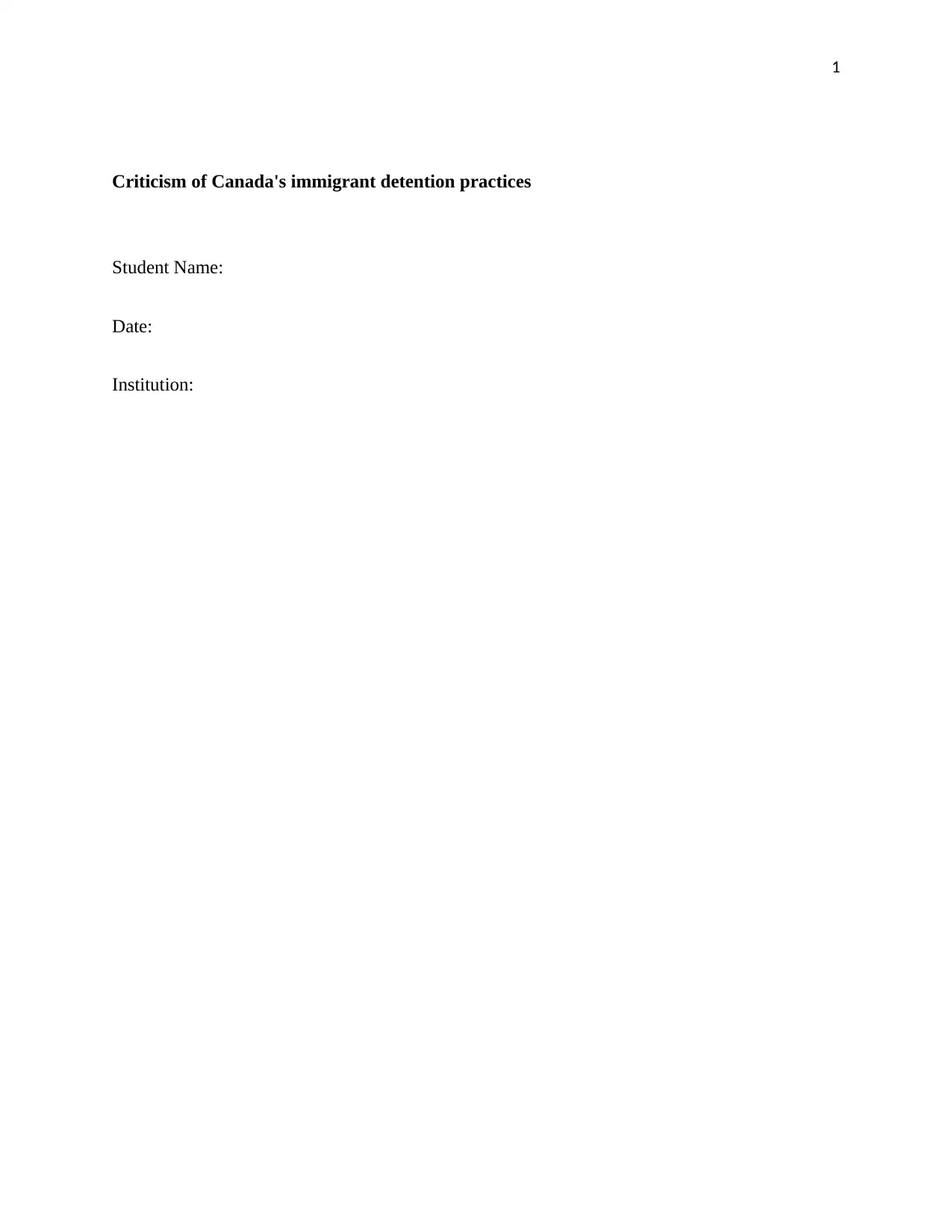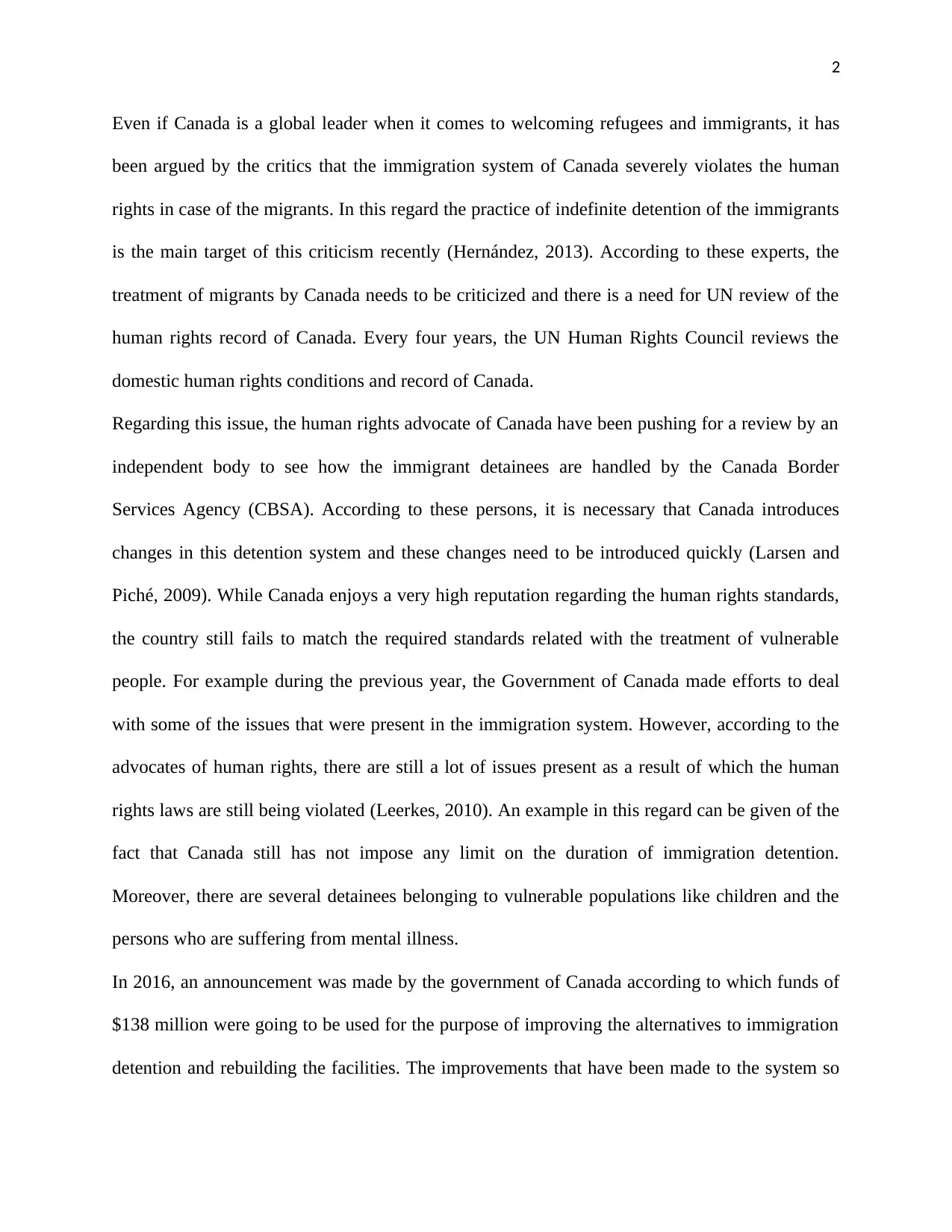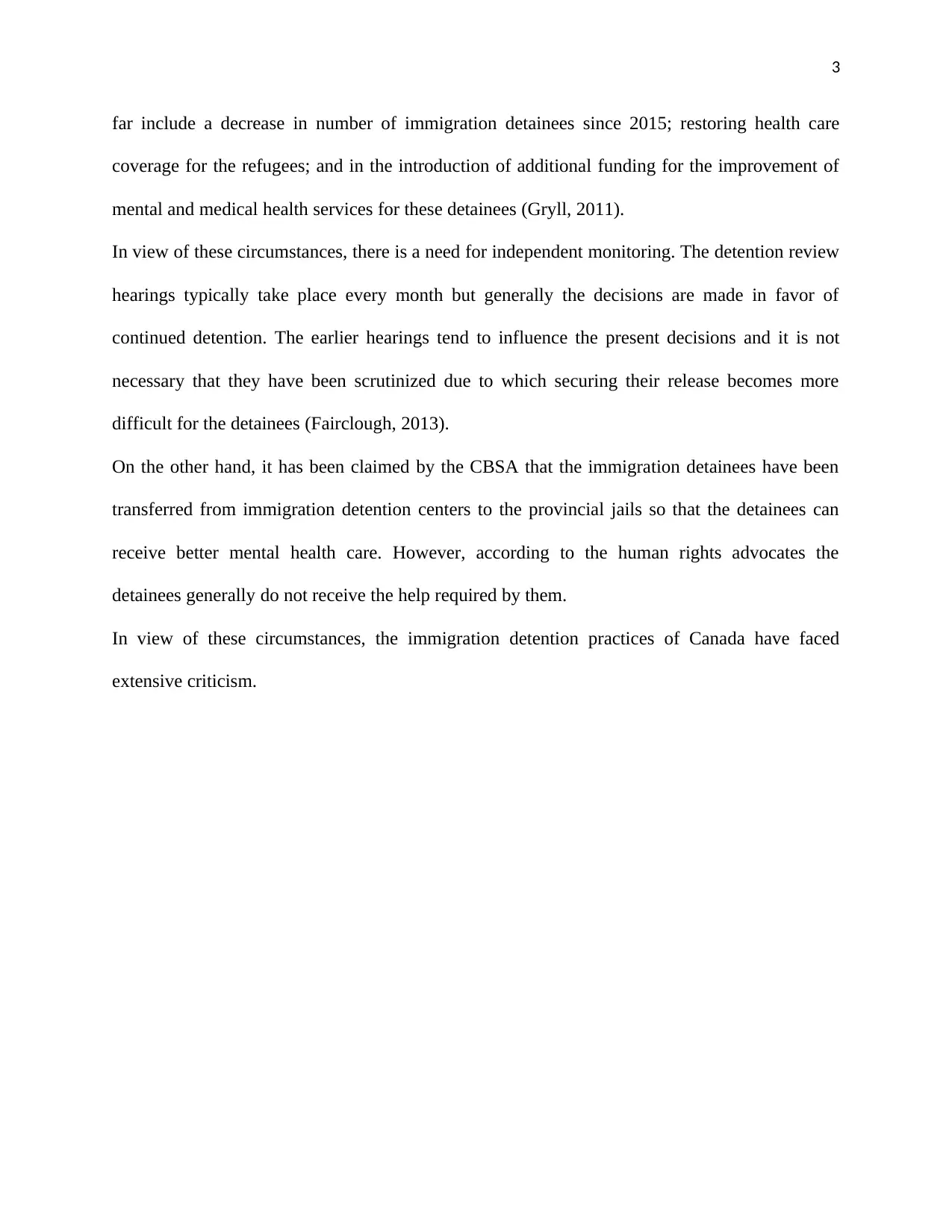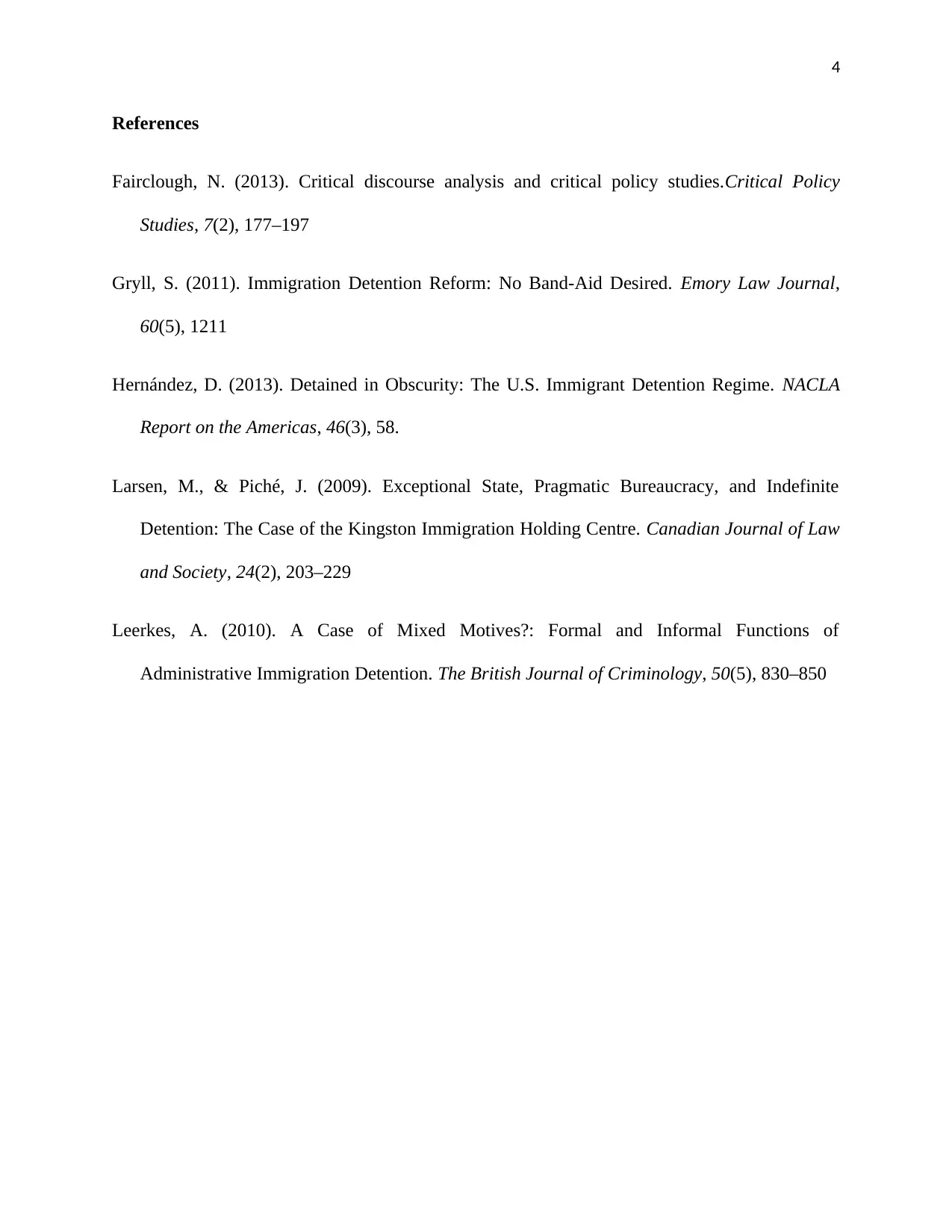A Critical Analysis of Immigration Detention Practices in Canada
VerifiedAdded on 2023/04/25
|4
|750
|390
Essay
AI Summary
This essay critically analyzes Canada's immigration detention practices, highlighting concerns raised by human rights advocates regarding the indefinite detention of immigrants and its potential violation of human rights. It discusses the need for independent monitoring and UN review of Canada's human rights record concerning immigration detainees. While acknowledging government efforts to improve the system, the essay points out persistent issues such as the lack of limits on detention duration and the detention of vulnerable populations. It also addresses the transfer of detainees to provincial jails for mental health care, which critics argue is inadequate. The essay concludes that Canada's immigration detention practices continue to face significant criticism despite some improvements.
1 out of 4








![[object Object]](/_next/static/media/star-bottom.7253800d.svg)